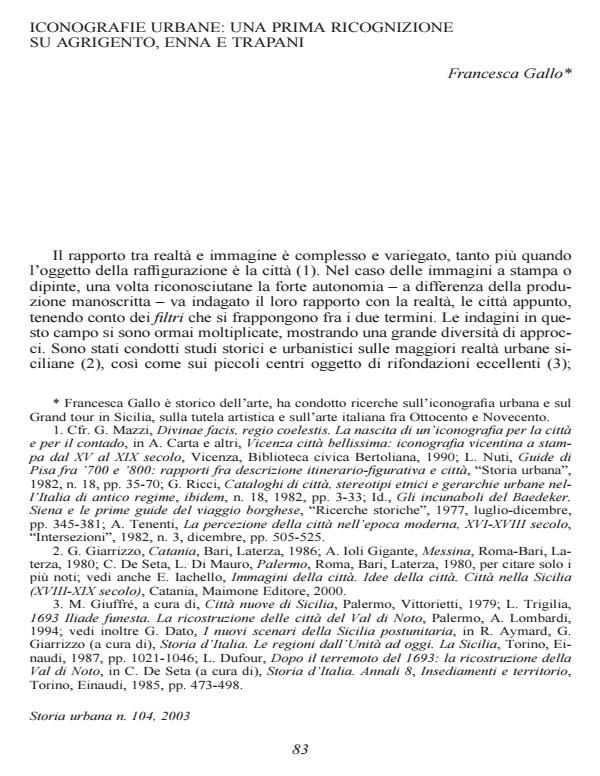Iconografie urbane: una prima ricognizione su Agrigento, Enna e Trapani
Titolo Rivista STORIA URBANA
Autori/Curatori Francesca Gallo
Anno di pubblicazione 2005 Fascicolo 2003/104 Lingua Italiano
Numero pagine 14 P. Dimensione file 320 KB
DOI
Il DOI è il codice a barre della proprietà intellettuale: per saperne di più
clicca qui
Qui sotto puoi vedere in anteprima la prima pagina di questo articolo.
Se questo articolo ti interessa, lo puoi acquistare (e scaricare in formato pdf) seguendo le facili indicazioni per acquistare il download credit. Acquista Download Credits per scaricare questo Articolo in formato PDF

FrancoAngeli è membro della Publishers International Linking Association, Inc (PILA)associazione indipendente e non profit per facilitare (attraverso i servizi tecnologici implementati da CrossRef.org) l’accesso degli studiosi ai contenuti digitali nelle pubblicazioni professionali e scientifiche
The way in which the towns of Enna, Agrigento and Trapani were considered in modern iconography was quite different. Enna was not included in the 16th century Atlas of towns and was only of minor interest for the Grand Tour. On the contrary, Agrigento, although quite well known between the 15th and 16th centuries, due to its importance as a wheat producer, can be found in the iconographical inventories only in the late 1700’s, as European travellers had, in the meantime, extended the range of their wanderings southwards in search of antiquities. As a flourishing emporium between the Peninsula and Africa, Trapani begins to be featured in collections of portraits of towns at the end of the 1500’s. It then gained great notoriety over the following centuries, just as its political and economical role in the kingdom was becoming marginal. Only with the growing phenomenon of travel in Sicily do urban portraits finally manifest significant changes in the choice of the perspective and of the issues to be highlighted.;
Francesca Gallo, Iconografie urbane: una prima ricognizione su Agrigento, Enna e Trapani in "STORIA URBANA " 104/2003, pp , DOI: